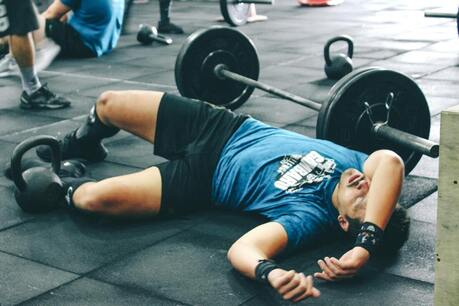|
High intensity training seems like an amazing shortcut for many mountaineers. If you can get the same results, with much less time commitment, why wouldn't you go down the high intensity route? Unfortunately, it isn't quite as simple as many of the high intensity advocates make it out to be. This article will explore the flaws in that thinking: If you are interested in training for mountaineering, you have probably heard the same few statements repeated to you over and over:
Well, today, I want to explore this in a little more detail. Here are seven reasons a mountaineer needs to be emphasising long periods of low-moderate intensity cardio in their training (and can't rely on CrossFit!): 1) It Causes Structural Changes To The Cardiovascular System Lower intensity aerobic training causes structural adaptations in the cardiovascular system. This includes things like:
On the other hand, high-intensity training mainly causes 'functional adaptations' which changes the function of pre-existing structures. This is still very important for a mountaineer, but if you are not optimising your structural adaptions, you will never get anywhere near your potential. *ATP is the fuel which produces energy in for our muscle contractions and just about everything else in the body. 2) Muscle Fibre Conversion In our body, we have both fast and slow-twitch muscles fibres. Fast-twitch muscle fibres produce quick, explosive movements but fatigue quickly. Slow-twitch muscles fibres cannot produce as much force but are very fatigue resistant. The makeup of these in the body can be changed to some extent. High-intensity exercise will lead to more fast-twitch muscles fibres. Long periods of lower intensity exercise will lead to more slow-twitch muscle fibres. Which would you prefer on the mountain? 3) ATP Recycling The ability of the aerobic energy system to 'recycle' ATP (to produce energy) is one of the most critical factors in endurance performance. One of the best ways to improve this is to deplete glycogen (stored carbohydrates) in the slow-twitch muscles fibres. This is best done with long duration, lower intensity training. High-intensity training can deplete the glycogen, but this is mainly in the fast-twitch muscles fibres (this type of training is too short to have any significant change on the fatigue-resistant slow-twitch fibres). 4) Improved Fat Adaptation Training long-duration, low-intensity exercise enhances the ability of the body to use fat as a fuel source, at increasingly higher intensities. This has two big benefits:
*This process can be enhanced with some dietary manipulation, but we will cover this another time. 5) Connective Tissue Resilience As a mountaineer, your tendons and ligaments all need to be able to withstand force over long periods of time. While strength training is probably the best way to do this, long periods of aerobic exercise is also important here. This exposes the connective tissues to this specific stimulus (i.e. long periods of moving on your feet), causing it to adapt and strengthen. And, as you increase the duration of your cardio, this will be a slight new stimulus and will keep the strengthening process going. Short duration cardio is just not specific enough here to prepare your connective tissue for long days on the mountain. 6) Mental Strength Often overlooked, mental strength is incredibly crucial for any mountaineer. While many might argue some masochist CrossFit workout will help develop mental toughness, there is a bit difference between surviving a workout in a gym for 40 minutes and 'embracing the suck' for 12 hours... To best prepare for a mountain adventure, you need to train your mind to be comfortable for moving for long periods, over different terrain, in different weather conditions. The more you can do here, the better. 7) Recovery Rates Recovery between bouts of exercise (e.g. intervals) is greatly affected by your aerobic capacity. Simply put, the better your recovery, the better you will be able to perform in your higher intensity training. If you don't have a high enough aerobic capacity, you won't be able to work as hard during your high-intensity sessions, which is effectively shooting yourself in the foot in these sessions. === So hopefully you are now aware of just HOW important long duration, lower intensity cardio is for a mountaineer. While some amount of high intensity training is important in your training, you cannot consider it as a replacement for your low intensity work. So if you do struggle to fit these sessions into your week, or you would much prefer to spend 40 minutes in a Crossfit Box than 4 hours on a bike, hopefully, this article can be a turning point for you. Do the right things in your training, and you will be thankful on the mountain. Want To Get
|
AuthorRowan is a personal trainer who specialises in training for hiking, trekkers and mountaineers for their bucket list adventures. Archives
July 2024
Categories
All
|
AboutSummit Strength is a personal training for hiking service created specifically to help hikers have the best chance of a safe, enjoyable and successful adventure.
|
Company |
Services |
|
|
© COPYRIGHT 2018. ALL RIGHTS RESERVED.
|
Website Design by My Personal Trainer Website
|


 RSS Feed
RSS Feed
